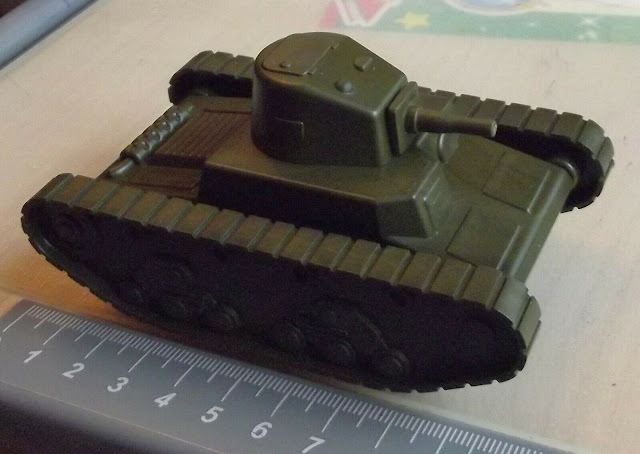The first post in this irregular series of blogposts is HERE
Frank Chadwick’s “Bathtub
Barbarossa” campaign started with a distinct advantage for ‘bathtubbing’: a
pre-made hex map (from the “Fire in the East” boardgame, with a scale of a one
inch hex = 16 miles or 25km ‘on the ground’).
However, Hereford1938 VBCW starts
with something else - knowledge both of the dimensions of our available
“tabletop” and of the County of Herefordshire ‘on the ground’.
Our usual “Big Games” are played
on a number of a 8ft x 6ft tables. Normally, three such tables joined together
to make, dependent upon the demands of the Big Game, a playing area of 8ft x
18ft or 6ft x 24ft. But what if, instead of three such tables, we were able to
expand to six such tables, arranged
in two rows? Arranged in the right manner, this would provide a massive -
nearly square - playing area of 16feet x 18feet.
In real life, Herefordshire is
slightly longer than it is wide. But not by much: the County is shaped somewhat
like a “slightly squeezed circle”, being approximately 30 miles “wide” (e.g.
east-west) and 32 miles “long” (e.g. north-south). “Approximately” is good
enough for these purposes, as the “county lines” are highly irregular on the
ground in any event.
The “bathtub challenge” is
therefore to represent the “slightly squeezed circle” of Herefordshire (30
miles wide by 32 miles long) on a “six table” tabletop (16feet x 18feet).
Looked at this way, the “scale” suggests itself: 2 miles = 1 foot. This even
leaves us with a bit “left over” all round the tabletop, useful for the
wargamer’s detritus of rules, dice and coffee cups (i.e. the County measures
15feet x 16feet vs the available tableop of 16feet x 18feet).
Back to the “Campaign Map”. We
can’t make a useful map measuring 15feet x 16feet. But we could make a useful “Campaign
Map” measuring 15inches x 16inches. This gives us a “map scale” of one inch (on
the map) to one foot (on the tabletop) to two miles (on the ground).
It could be that the “Campaign
Map” should use “hexes”, but to keep matters simple, one inch squares would be
better, making it much easier to “translate from map to table”, which is the
key for our purposes. With such a scaled map, all that the wargamer really
needs to remember is that “one inch on the map equals one foot on the tabletop”,
leaving the umpires to make sure that the map reflects “the ground” on the
basis of “one foot on the tabletop equals two miles on the ground”.
After a bit of research, here are
the “as the crow flies” distances between Hereford and the principal towns that
have featured in the Hereford1938 campaign, given first according to “on the
ground”, then in squares “on the map”, and finally in feet “on the tabletop”:
Hereford to Hay on Wye - 22 miles (11 squares on the map) (11 feet on
tabletop)
Hereford to Leominster - 12 miles (6 squares on the map) (6 feet on
tabletop)
Hereford to Ledbury - 12 miles (6 squares on the map) (6
feet on tabletop)
Hereford to Presteigne - 19 miles (9.5 squares on the map) (9.5 feet
on tabletop)
Hereford to Ross on Wye - 11
miles (5.5 squares on the map) (5.5 feet on tabletop)
Hereford to Bromyard - 13 miles (6.5 squares on the map) (6.5
feet on tabletop)
Hereford to Ludlow - 22 miles (11 squares on the map) (11 feet on tabletop)
while two other interesting distances between towns can also be
calculated:
Ludlow to Ross on Wye - 33 miles (16.5 squares on the map) (16.5
feet on tabletop) (north south)
Presteigne to Bromyard - 25 miles (12.5 squares on the map) (12.5
feet on tabletop) (east west)
[Just for fun, Hereford to London
- 117 miles (58.5 squares on a map/58.5 feet on tabletop - a tennis court is
78 feet long) Such gives a good indication of the “bathtub scale”, but in real
life, well, we have to stop somewhere.]
Now, it must be acknowledged that
some of our Hereford VBCW towns are not actually in Herefordshire, but just on
the border - Ludlow in Shropshire, Hay on Wye in Brecknockshire (now part of
Powys) and Presteigne in Radnorshire (also now part of Powys). Given that our
scaled representation of Herefordshire is actually a little smaller than our
available tabletop, however, we can still happily “adopt” these towns into a bathtub - based “Biggest Game of All”.















































